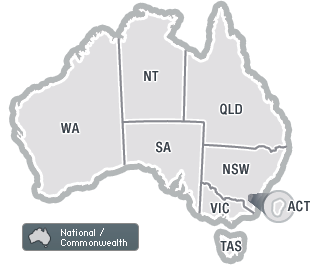A major project has reduced strain and sprains by 25 per cent in eight months, by observing workers' day-to-day activities and proactively identifying and implementing safer ways to carry out manual handling tasks, according to its safety manager.
The joint venture between CPB Contractors and John Holland in Sydney rolled out a health and injury prevention program for 2,500 employees and subcontractors in August last year.
With health and wellbeing program provider Logic Health, the project provided two exercise physiologists to engage with workers at its 12 sites on a daily basis, carry out ergonomic assessments of workspaces for the 300 office staff, and introduce monthly health topics aimed at improving health outcomes.
CPB Contractors safety manager Craig Godwin, who was responsible for implementing the program, says the current stage of the project involves mainly building work, with workers carrying out a lot of intensive manual handling tasks, making them prone to strains and sprains.
He notes that "in Sydney at the moment, there's a lot of infrastructure work going on and there's a wide range of people being drafted in by some of our subcontractors to do a lot of the work".
Many of the workers in the joint venture project aren't accustomed to being treated well by their employers, and were initially "a bit cynical and suspicious" of the services provided in the injury prevention program, he says.
"One of the main things [the exercise physiologists] do is engage with the people, building up rapport and trust," Godwin says.
He says they observe workers carrying out their tasks to identify safer ways of doing those activities. They also instruct workers on stretches and body conditioning exercises they can perform within the constraints of their roles, such as confined spaces work.
If a manual handling incident does occur, the task will be formally assessed and an alternative method, or alternative tools, will be implemented, Godwin says.
He says the sites' "stretch bosses" – volunteer workers trained by Logic Health to lead pre-start stretches – have been crucial to boosting worker buy-in to the program.
They're not being instructed by "some management team"; it's "their own guys, so there's more trust".
"People are spreading the word... People are giving it a try and realising the benefits, and the feedback has been extremely positive."
According to Godwin, the rate of strain and sprain injuries has fallen by about 25 per cent since the program was implemented, and workers are also benefiting from its wellbeing aspects, like education on health issues like blood pressure.
Logic Health director Eoghan McKenna says that when workers don't have a rapport with the people providing safety support, they are less likely to report issues like aches and pains that later become sprain and strain injuries.
This is a critical aspect of early intervention, he says.
McKenna adds that for a long time, manual handling interventions have been about telling workers to bend their knees and keep their backs straight, but they should be "relevant and realistic", providing workers with practical injury prevention solutions and advice they can use.
For example, excavator operators can be provided with exercises they can do regularly through the day in their cabs, while scaffolders and steel fixers can be provided with ergonomic tool bags and tool belts that distribute weight evenly, he says.
The information needed to ensure measures match workers' needs is most easily gathered by working with crews, he adds.



